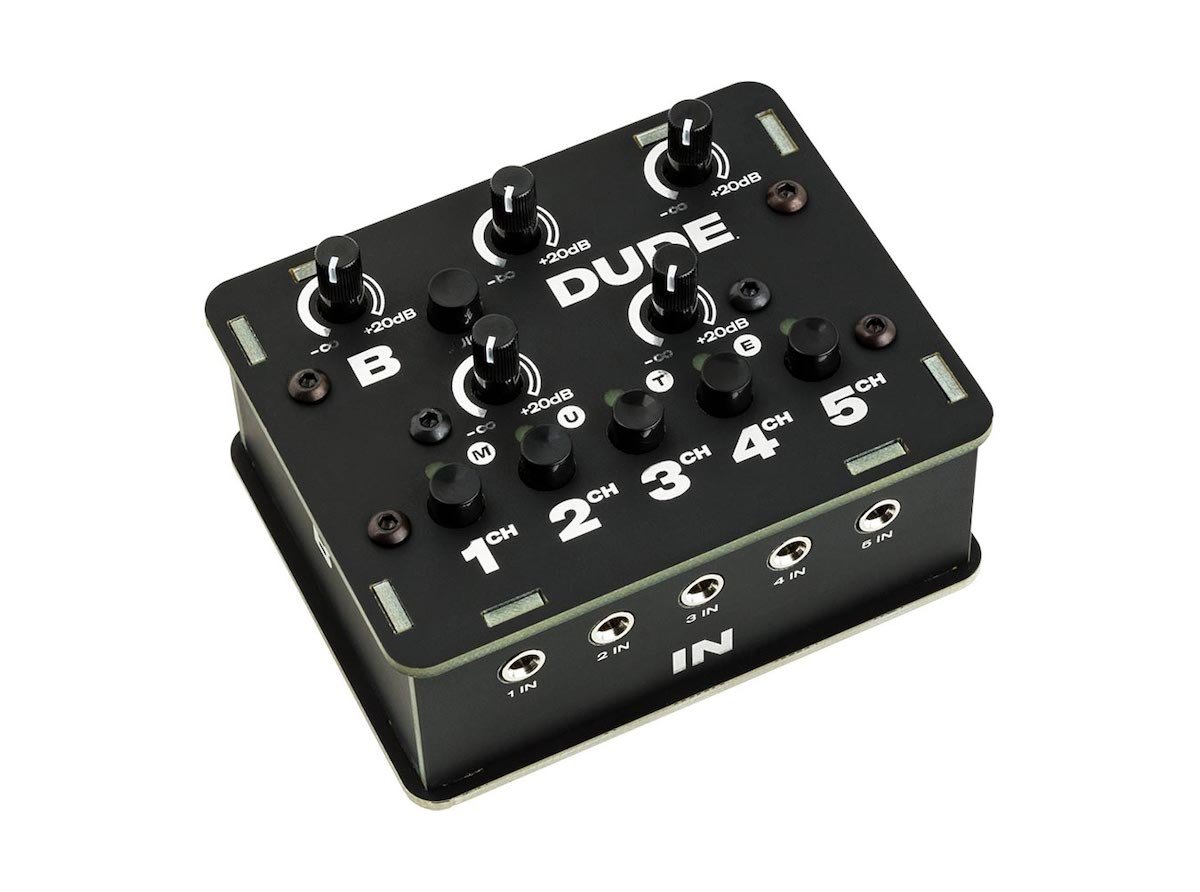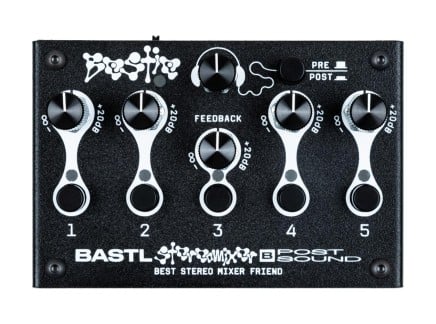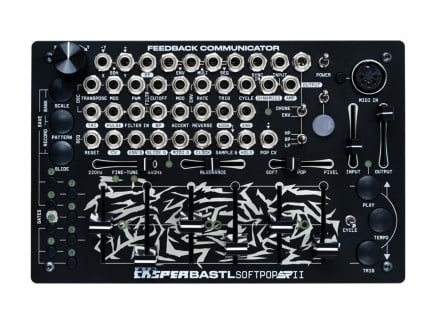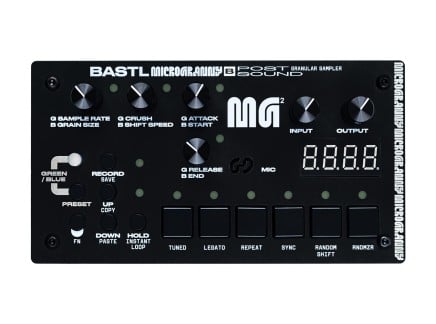Every mini synth collection needs a bestie—and in this case, maybe that should be Bastl’s Bestie. (See what I did there? Okay, okay, fine.)
Over the past ten years or so we have witnessed a proliferation of pint-sized music making devices, including such beauties as Korg’s Volca FM 2, Teenage Engineering’s sampling champ PO-33, and the Roland AIRA Compact J-6. These can all be wonderful at doing a particular thing or another in their own right, and are great fun to take out and about due to their portable nature—but they really come to life when paired with other bits of gear. That makes things a bit trickier in a practical sense, as you then need to find a way to blend the various signals together, and mixers (good quality ones at least) are often far too big to lug about.
From Dude to Bestie
Bastl are no strangers to this particular quandary, given as it is that they are the esteemed inventors of miniature bits of gear such as the MicroGranny and SoftPop 2 modular synth. Bringing to bear their considerable experience in this realm, they created the Dude in response—an ultra portable, five-channel mixer with fierce pre-amps that could run on 4xAA batteries.
As useful as Dude was though, it had some key limitations, and after a few years of popularity with the noise making community, it was sadly discontinued. However, all was not lost, as those cheeky Czech chappies quickly followed up by introducing its successor and subject of this very article, Bestie.
Your Bestie Up Close
Bestie shares many of the core characteristics of its predecessor—including those that rendered it so practical in the first place—but builds and improves upon them for the modern mini-rig enthusiast. Both Bestie and Dude are active, five-channel mixers that have individual mute buttons, minijack headphone outputs, and a whopping 20db of extra analog gain that can be called upon to crunch up your signals beautifully. However, Bestie has a suite of extra alterations that take things to another level.
The most immediately noticeable upgrade between the two siblings lies in the construction. While Dude was sturdy, it was also made out of plastic. For a device that was designed to be taken out and about, this might have been a bit of a concern for those that end up in raucous situations (or just the careless, like moi). Bastl have addressed that eventuality with Bestie—dressing it in a very classy, hard-wearing, full metal jacket. You definitely won’t need to worry about dropping this thing on the floor, and it could probably also act as a fairly effective defensive weapon if you found yourself needing to hurl it at an aggressive punter or disgruntled sound engineer in a "lively" gig scenario (note: I should make it clear for the record that I definitely do not condone or encourage this kind of reckless behavior, and would never engage in such actions myself—but you never know).
Despite its levelled-up armor, Bestie remains both light and ultra portable. It is about the size of one of those battery packs you get for your mobile phone, which is rather handy actually, because in addition to the possibility of being powered by 4xAA’s, it can also get the necessary juice over USB-C. This is a big improvement over the Dude, which demanded a DC power input—something that is usually a much bulkier affair, and meant having to be aware of input voltage differentials if you were the type of high-flying individual like myself (!) that would regularly travel between continents. Much simpler. Very welcome.
Another major upgrade that Bestie brings to the party is support for stereo inputs. Channels 2, 3, and 4 have stereo minijack connections—while channels 1 and 5 have an additional minijack input to allow the use of a single stereo, mono, or double mono configuration without adapters.

Input three though…well, it hides a dirty secret. It can of course be used as a regular stereo channel, but if nothing is plugged in, then it is normalled, for use as a feedback loop. In other words: its output is sent back into the input chain of the mixer internally, at a strength adjustable with the relevant volume control. Inspired by the "no-input mixing" technique of generating sounds through manipulating self-oscillation, this creates different tones of varying pitch. The real magic comes when you mix this kind of self-feedback with other sources. Rhythmic elements such as drums work particularly well, especially when overdriven with the Bestie’s analog pre-amp circuits. The result is a noisy, riotous destruction of sound—and one that begs you to experiment. It sounds especially cool in stereo, with the chaos undulating from ear to ear, and I was genuinely surprised at how much I enjoyed both the process and the results. Even without the feedback loop, Bestie is capable of saturating signals beautifully, and is great for adding crunch and dirt to your signals. Overloading old mixers such as the Boss KM-60 in this way was a staple for many years in the techno community, and Bastl’s wee beauty comes well-prepared for the task.
What about outputs? Where the Dude had just a single, dual mono headphone jack, Bestie has both a stereo line output, and a stereo headphone output with a dedicated volume control that is switchable between pre-and post mute states. This means that you can audition elements of your mix before unmuting them to send out to the main mix—which is extremely handy for live performances. No more risk of bum notes inadvertently making an appearance! What’s more, headphones with an impedance between as low as 8 and as high as 250 ohms are supported, providing more than enough power to drive even fairly demanding sets of cans. This could perhaps prove to be a neat wee headphone amp in its own right.
Who Bestie Is For?
So this all sounds great, but who exactly would this kind of thing be for? Well, the fact is that there are a few features notably absent in Bestie that some may well expect to find in a mixer, and which may rule it out as an option if you happen to have those particular needs. Specifically, despite the mixer supporting stereo signals, there is no way to separately pan the individual channels. There are also no dedicated FX sends, no EQ, and no master output volume. The thing is though, Bestie isn’t meant to replace all of the functionality of a full-sized, fully featured console. The beauty of it lies in its simplicity, combined with the capabilities that it has packed into a tiny, rugged, battery powered metal box. If you want a more traditional mixer, you will need to look elsewhere, and compromise on either quality, price, or size.
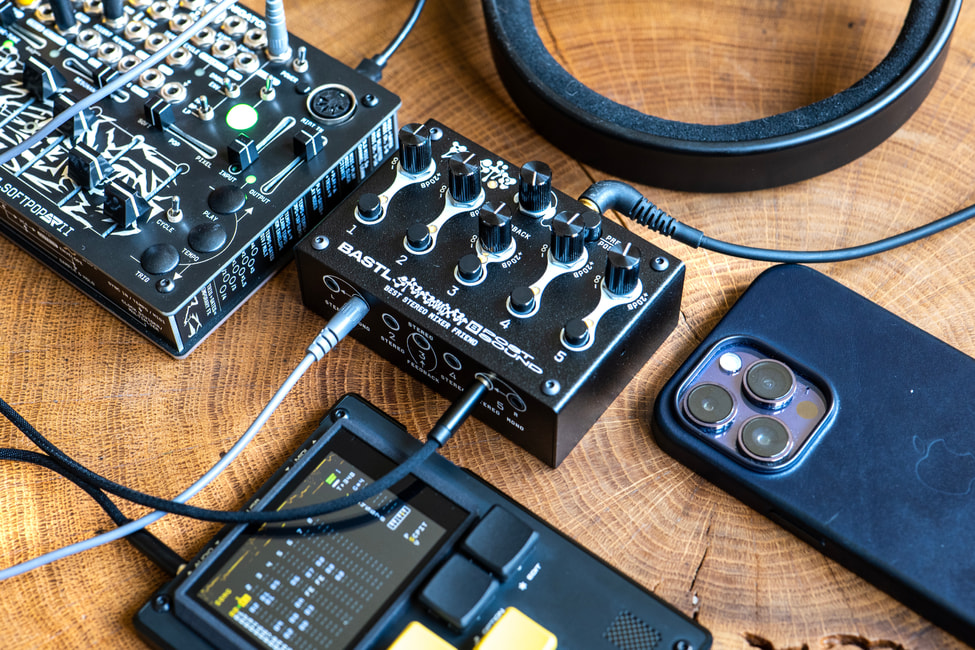
Despite some apparent limitations, Bestie can indeed be used for a variety of singularly utilitarian purposes. It would be ideal as a sub-mixer within a larger studio setup for example. Similarly, it could prove invaluable for all of the DAW jammers out there to marry a spread of disparate tabletop gear…or for a compact live setup. However, viewing Bestie purely as a standard mixer would be a mistake—for this is an idiosyncratic beastie. Sonic exploration and noise-making are firmly part of Bastl’s history, and Bestie really shines when the dials are turned up and caution is thrown to the wind. The minijack connections lend themselves nicely to modular setups, where competing signals can be thrown together and forced to fight for dominance, producing distortion and harmonic overtones a-plenty.
If you are looking for a highly portable analog mixer to blend signals and provide character in a manner of creative ways—this is well worth a look. Are there cheaper options for straight-up mixers available elsewhere? Definitely. Do they include all of Bestie’s features with the same kind of build and component quality? Probably not. Trust me. I’ve looked.


